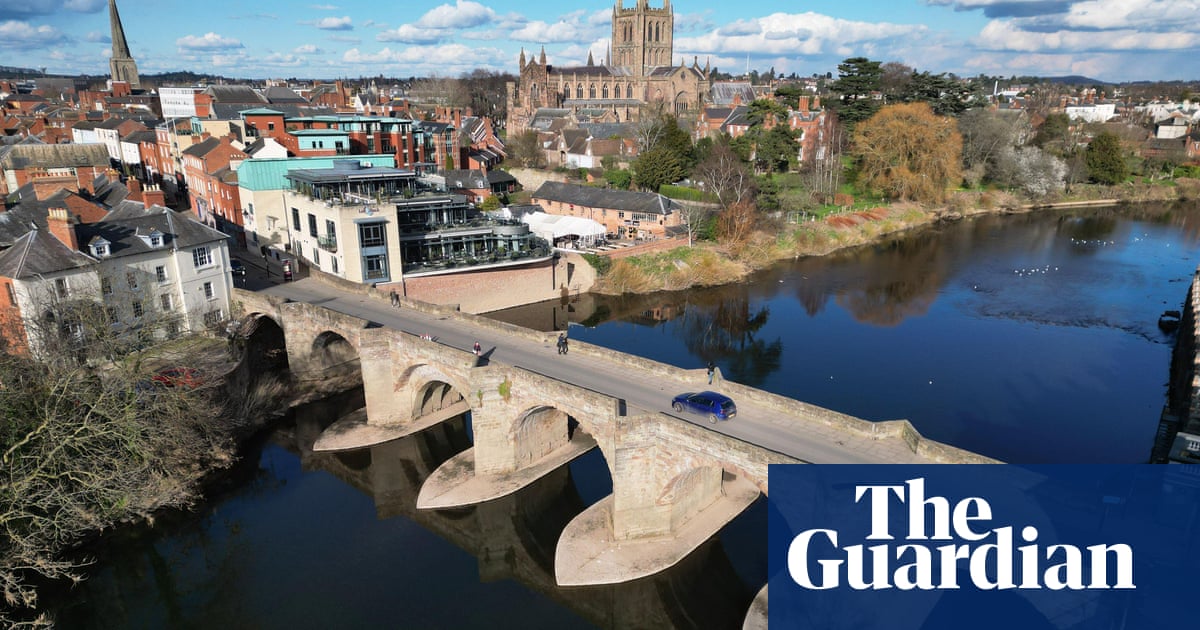
River levels across the UK have been at record lows and are likely to be “devastated”, as new data forecasts broadly dry weather until at least May.
Campaigners have said the government and water companies have not done enough to conserve water supplies by building reservoirs and fixing leaks, as months of low rainfall could cause some areas to run out of water.
The monthly outlook from the UK Centre for Ecology and Hydrology warns that extended dry conditions are more likely than not and that rivers are already suffering.
The report states: “River flows in February closely followed the rainfall pattern received, with normal to exceptionally low flows across the UK, with the exception of parts of the Scottish Highlands. Record-breaking low flows were recorded in the Trent, Warleggan and Annacloy, with exceptionally low flows seen across large parts of central and south-western England. River flows for March – and March, Apriland May as a whole – are likely to remain normal to below normal, with a high chance of exceptionally low flows in places.”
Groundwater levels are also an important measure of drought status, as it is often abstracted for farming and other purposes. The report predicts levels in many areas will be low: “Groundwater levels are likely to be normal to below normal across most of England and Wales for the next three months, and likely notably low in parts of the chalk of southern England and the Jurassic limestones.”
It also reveals that the Severn Trent, Thames and Anglian regions are those likely to suffer most from low river flows and groundwater levels.
Despite the recent snowy conditions and scattered rainfall, the country is still recovering from last year’s record-breaking dry weather. Two areas of England – East Anglia and Devon, Cornwall and the Isles of Scilly – remain in “drought” status, with most now “recovering”.
Mark Lloyd, the chief executive of the Rivers Trust, said this year was likely to be “devastating” for rivers if there is a second drought in a row.
He said: “This data makes clear what many of us working in the environment sector have suspected throughout the course of the winter. Following on from last year’s drought, which is still ongoing in many areas, groundwater and watercourses have not been replenished ahead of what could be another hot, dry summer.
“Repeated drought conditions year-on-year would be devastating for rivers. As well as severely reduced flow levels, drought decreases the amount of oxygen in the water, which is damaging to wildlife, and the low water levels also concentrate the cocktail of pollution, which we sadly know is blighting rivers across the country.”
Water campaigner and former Undertones frontman Feargal Sharkey said Londoners could face a summer of water shortages due to the dry weather and lack of government action.
He told the Guardian: “I predicted it six months ago in this very newspaper. But government and water companies don’t listen, they never do.
“One is corrupted by the fragrance of corporate greed, the other drunk on a compliancy founded on indifference. It’s a toxic cocktail that is about to blight the lives of millions of Londoners.”
Farmers are concerned, too. NFU national water resources specialist Kelly Hewson-Fisher said: “Last year’s prolonged spell of dry weather, and two areas of the country still in drought status, has highlighted the urgent need for government to take our national food production and resilience seriously.
“It’s vital that agriculture is recognised as an essential user of water, and the country’s ability to produce food given due regard. This will build resilience into the farming sector and help provide investment opportunities for water infrastructure such as more on-farm reservoirs.”
Anglers have noticed a winter of dry streams, and predict that fish are likely to struggle.
Martin Salter, head of policy at the Angling Trust, said: “Anglers are seeing more clearly than most the effect of the extreme weather patterns caused by climate change on our rivers and wildlife. Gone, it seems, are the winters of steady rainfall. In their place we see drought and low flows, which makes fish and wildlife even more vulnerable to the twin evils of sewage and agricultural pollution, or horrendous floods that wash out much of the young fry and further deplete what are already threatened fish stocks.”
This article was amended on 13 March 2023. An earlier version included an image of the River Ribble at Preston, which is tidal at that point.












